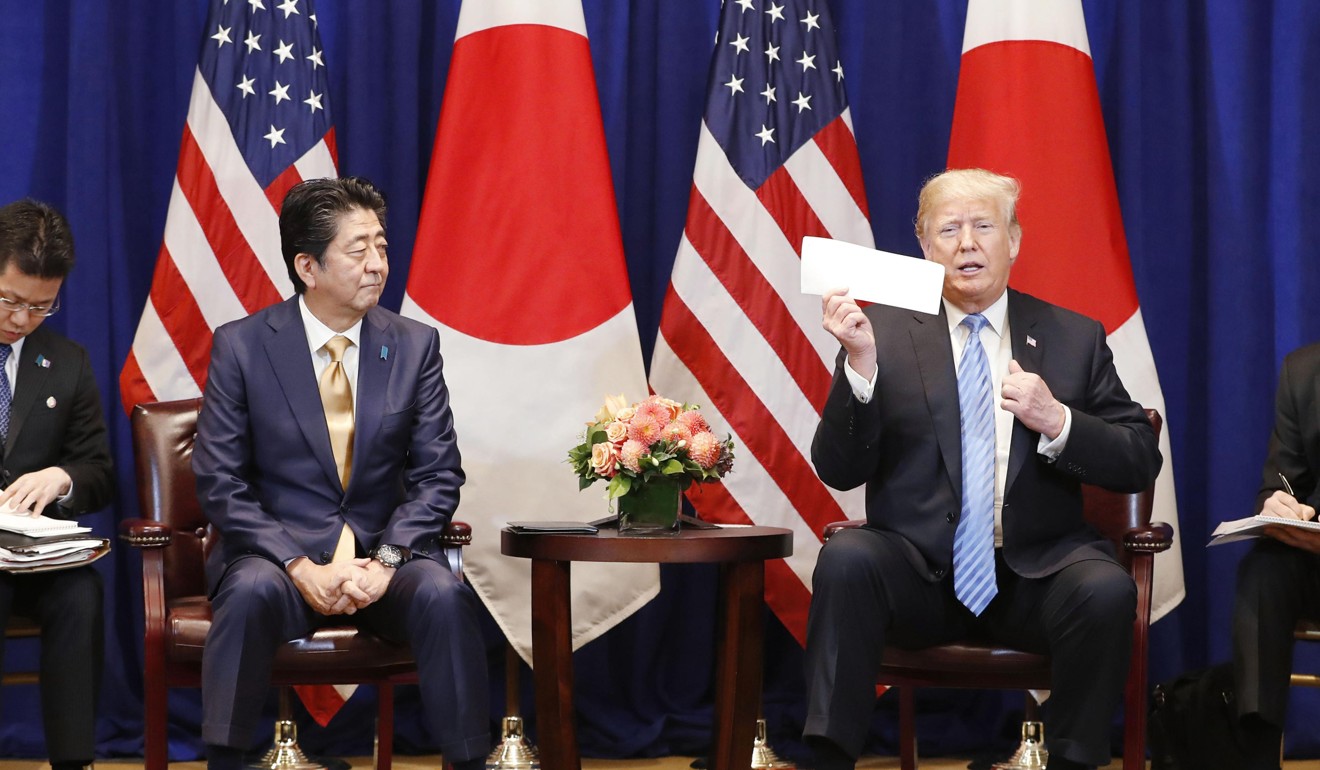
Stable ties are good for China, Japan, the region and the world
- Summit between Xi Jinping and Shinzo Abe a cause for celebration
The first full-scale summit of the leaders of China and Japan in seven years is as much a cause for celebration as the event it also marks, the 40th anniversary of the signing of a landmark peace and friendship treaty.
When President Xi Jinping meets Japanese Prime Minister Shinzo Abe in Beijing on Friday, the chill that has been prevalent in ties for much of the time since Tokyo nationalised the disputed Diaoyu Islands in 2012 can at last be said to have been replaced by warmth.
Trade friction with the US has spurred the diplomacy, but both nations also understand the need for cooperation to shore up their fortunes and the world’s multilateral organisations.

Although there are fundamental issues being set aside for the sake of what amounts to a tactical detente, they must push for progress and take steps to ensure bilateral relations do not cool again.
Abe will be accompanied by a large business delegation that will have trade and investment on its mind. China has the same goals and if all goes well, the most immediate result of the summit could be joint Chinese-Japanese infrastructure projects involving the “Belt and Road Initiative”.
Both countries have been targeted by United States President Donald Trump’s protectionist policies, and increasing imports and exports and cooperating on joint ventures could counter the impact.
Such deals would elevate relations and set them in a positive direction while sending a clear message about multilateralism and the free-trade system.
The enactment of the Sino-Japanese Treaty of Peace and Friendship on October 23, 1978, ended more than eight decades of animosity and marked the start of gradually improving diplomatic and trade relations.
Underpinning the accords were shared culture, customs and religion and thousands of years of mostly cordial relations.
In the background, though, were the scars of more than eight decades of Imperial Japan’s invasion and occupation, which were given fresh impetus with friction over the Diaoyus, known to Japanese as the Senkakus, and the nationalism and historic revisionism that returned Abe to power soon after.

But Trump has caused a shift in positions. Ties have been on the mend since April when high-level economic dialogue resumed for the first time in eight years.
The following month, Premier Li Keqiang visited Japan, the most senior Chinese official to do so since 2011. Beijing announced Abe’s trip on October 12 and work has been under way for some time for a reciprocal visit by Xi early next year.
Stable and cooperative ties will be good for China and Japan, the region and the world. The belt and road is one area where the two nations can build trust and attain mutual gain. Economic cooperation is the best place to start rebuilding relations.

